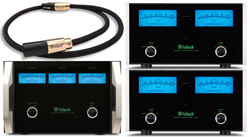
Question:
I recently purchased a 7.1 AV pre/pro for my home theater as an upgrade from my aging Marantz AVR. I am debating if I should pair this with a 7-channel amp for simplicity and lower cost or if I would get better performance pairing with 5 channel for the surrounds and a 2 channel amp for L/R.
– Ryan Francis
Harriman, UT
Answer:
I can see arguments for both sides of this question. On the one hand, you’re right that a 7-channel amp offers simplicity and lower cost. Also, you’re assured of the same sound quality and tonal signature in all channels, at least as far as the amp is concerned. (If you have mismatched speakers, all bets are off in that regard.)
However, in general, the speaker cables should be as short as possible to minimize the chance of picking up electromagnetic or radio-frequency interference (EMI or RFI). So placing the amps close to the speakers can sometimes result in better sound quality.
In this case, I’d get a 3-channel amp for the front left, center, and right speakers and a 4-channel amp for the surrounds, placing the 3-channel amp near the front speakers and the 4-channel amp near the surrounds. Granted, 4-channel amps are much more common for car-audio systems than home theaters, so you could opt for two 2-channel amps or a 5-channel amp with one channel going unused.
In this scenario, if possible, I’d use balanced audio cables to connect the pre-pro to the amps. (You don’t identify the model of pre/pro you got, so I don’t know if it provides balanced outputs. If it does, be sure to get power amps that provide balanced inputs.) Balanced cables are far more immune to EMI and RFI than unbalanced interconnects, which is why they are strongly preferred for long cable runs. If you go with a single 7-channel amp and you put it near the pre/pro, short unbalanced cables are fine.
If you really want to go crazy, get monoblock amps, one for each speaker. That way, all the speaker cables can be very short if you place each amp near its speaker. Many audiophiles believe this provides the best possible sound quality, but it is probably the most expensive way to go, and you need an AC power outlet near each speaker.
If you go for multiple amps, make sure they are from the same manufacturer and even from the same product line. As with speakers, the tonal quality should be the same for all channels. The front three channels should all have the same power output, while the surrounds can get by with less, though having the same power all around is certainly not a bad thing.


